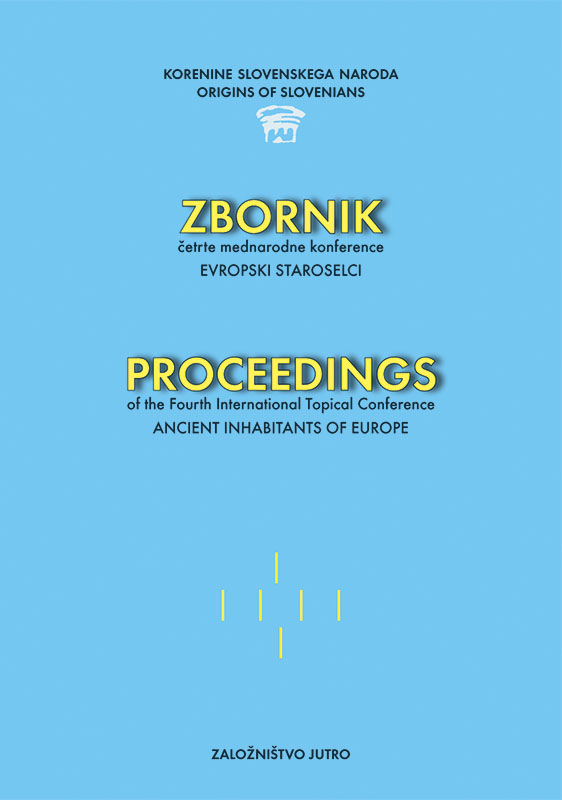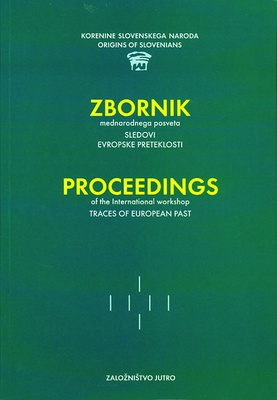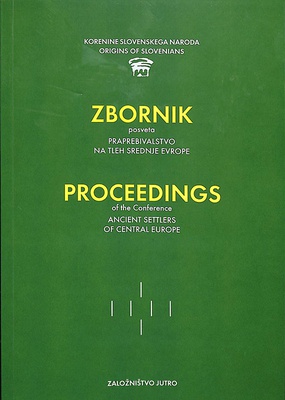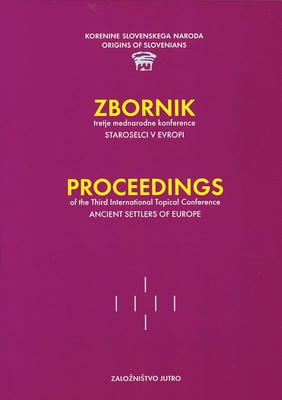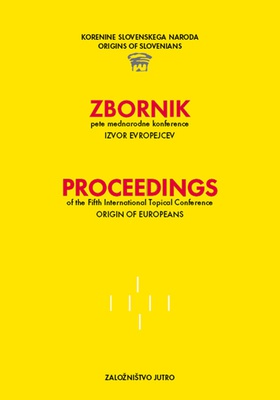SKUPINE KNJIG
(V.) ZBORNIK KONFERENCE EVROPSKI STAROSELCI (2006)
- Velikost:
- 16,5 x 23,5 cm
- Tisk:
- enobarvni
- Število strani:
- 256
- Vezava:
- broširano
- ISBN:
- 9789616433754
- Prodajna koda:
- 7040
- Cena:
- 18,70 €
- Akcijska cena:
- 10,00 €
Iz dejstev, ki so jih predstavili avtorji, sledi, da je bilo v Noriku v mestih in utrdbah rimljansko prebivalstvo, medtem ko prebivalstvo na podeželju še ni bilo porimljanjeno. O priseljevanju Slovencev ne poroča noben znan vir. Ime »Slovenia« je obstajalo že pred naselitvijo Hrvatov, torej pred letom 626 po Kr. Celotno današnje hrvaško jezikovno ozemlje je pred naselitvijo Hrvatov pripadalo Slovencem in se je imenovalo »Slovenia«.
Vodilni evropski jezikoslovec Mario Alinei piše: ».., zavreči moram eno od najbolj absurdnih posledic tradicionalne kronologije o 'prihodu' Slovanov na ogromna ozemlja, na katerih danes živijo. Edini logični sklep je lahko ta, da je južna veja Slovanov najstarejša ter da sta se iz nje razvili zahodna in vzhodna veja Slovanov na različne načine in morda v različnih časih... Danes le manjšina strokovnjakov podpira teorijo o poznem preseljevanju Slovanov ... Domnevno 'slovansko preseljevanje' je povsem nevzdržno. Slovanska prisotnost no ozemlju, ki se skoraj povsem ujema s tistim, na katerih danes živijo, je obstajala nepretrgoma od kamene dobe ... Slovani so (skupaj z Grki in drugimi balkanskimi ljudstvi) razvili poljedelstvo ... poljedelsko mešano gospodarstvo, značilno evropsko, ki je kasneje omogočilo rojstvo grške, etruščanske in latinske urbanizacije. Germanska ljudstva so prevzela poljedelstvo od Slovanov ...«
The evidence suggests that in Noricum the urban population as well as the demography of military outposts was largely Roman. But the rural population of the countryside was largely not Romanized. There is no evidence nor source of reports that would suggest that the ancestors of the Slovenes immigrated into the region. The name »Slovenia« existed before the arrival of Croats in the year 626 AD. All the present-day Croatian territories belonged to Slovenians and if had been named »Slovenia«.
A leading European linguists, Mario Alinei states: »I have to commence by clearing away one of the most absurd consequences of the traditional chronology\ namely, that of the 'arrival' of the Slavs into the immense area in which they now live. The only logical conclusion can be that the southern branch of the Slavs is the oldest and that from it developed the Slavic western and eastern branches in a differing manner and perhaps at different times... Today only a minority of experts support the theory of a late migration for the Slavs... The surmised 'Slavic migration' is full of inconsistencies. There is no 'northern Slavic language', it is rather only a variant of the southern Slavic... The first metallurgy cultures in the Balkans are Slavic... and connected with Anatolia... Slavic presence in the territory, nearly identical to the one occupied by them today, exists ever since the Stone Age ... The Slavs have (together with the Greeks and other Balkan peoples) developed agriculture ... agriculturally mixed economy, typically European, which later enabled the birth of the Greek, Etruscan, and Latin urbanism. Germanic peoples adopted agriculture from the Slavs...«
